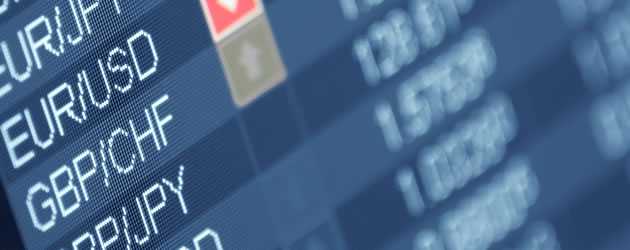Pound Sterling (GBP)
On Wednesday British unemployment fell by more than the market consensus to a fresh 6-year low, which caused Sterling to drift a little higher against its most-traded currency peers. However, average weekly earnings showed a particularly disappointing increase of only 0.6% which was significantly lower than the rate of inflation. The weakness in wage growth is the principle obstacle preventing the Bank of England raising interest rates.
The most recent minutes from the BoE revealed that policymakers were split 7-2 in favour of maintaining interest rates. The majority of the monetary policy committee were concerned over the miscorrelation between inflation and wage growth. The two dissenters, Martin Weale and Ian McCafferty, retained their hawkish stances and the Pound gained a little support as a result.
Thursday’s British data has seen year-on-year retail sales fall below the market forecast. Month-on-month sales growth exceeded expectations however. The slightly disappointing retail data, coupled with the final vote on Scottish independence on Thursday, will likely see the Pound subject to heightened volatility.
Euro (EUR)
The Bank of England’s hawkish policymakers allowed the Pound to Euro exchange rate to rally by around 0.4 cents on Wednesday. Sterling also managed to gain a little on the back of fresh Scottish exit polls which suggested the lead to be in favour of the Unionists.
Markets have anticipated a victory for the ‘No’ camp, which ought to act as a catalyst for a sharp rebound in the value of the Pound. However, given how close the voting has been thus far, it would be foolish to rule out the possibility of secession, and that would seriously undermine confidence in the Pound. The results are expected early on Friday morning.
Eurozone inflation fractionally outperformed the market forecast of 0.3%, hitting 0.4% in August. However, with crude oil prices plummeting to record –lows the outlook for consumer prices in the currency bloc remains weak.
US Dollar (USD)
Increased optimism that the Scots will vote against independence allowed the Pound to US Dollar exchange rate to reach a fortnightly high. Positive UK unemployment data, a couple of hawkish BoE policymakers and a below par US inflation print also aided Sterling gains.
A surprisingly steep monthly drop saw American consumer prices decline for the first time in 2014. The Consumer Price Index was forecast to slow from 2.0% to 1.9% but the actual data revealed a dive to 1.7%.
During the evening Federal Reserve Chairwoman Janet Yellen announced that the asset purchasing target was to be cut by -$10 billion to $15 billion. However, she also continued with her stance on hiking interest rates, saying that the low rate would remain for a ‘considerable amount of time’. Yellen said that the Fed expects the benchmark interest rate to be between 1.25%-1.50% by the end of 2015. This is a slight improvement on previous estimates but is perhaps not hawkish enough to allow the US Dollar to continue to enjoy its bullish run.
Canadian Dollar (CAD)
Given that the ‘Loonie’ (CAD) is particularly sensitive to US Dollar movement it has been subject to increased volatility over the past few days. Now that the Fed has made their decision on monetary policy, the Canadian Dollar has firmed up fractionally as traders digest the dovish outlook on monetary policy.
Australian Dollar (AUD)
As anxieties over the Scottish bid for independence cooled somewhat on Wednesday; the Pound to Australian Dollar exchange rate strengthened to a fresh monthly high, rising by around 2.7 cents. The Pound to ‘Aussie’ (AUD) exchange rate is holding relatively steady on Thursday which could be a sign that trader confidence of a ‘No’ to Scottish independence is not quite as high as Wednesday.
New Zealand Dollar (NZD)
Investor sentiment towards Sterling seemed to improve dramatically on Wednesday which was evidenced in the Pound to ‘Kiwi’ (NZD) exchange rate rallying by over two cents to a half-year high.
Data published late on Wednesday night showed that New Zealand’s economy grew by 0.7% in the third quarter; slightly more than the 0.6% GDP growth anticipated by traders. However, this has had little impact on ‘Kiwi’ strength after the Reserve Bank of New Zealand’s recent insistence that they aim to pause the current interest rate for a long period of time.
South African Rand (ZAR)
The South African Rand gained against Sterling on Wednesday after South African retail sales outperformed the market consensus. With the South African Central Bank due to make their interest rate decision later on Thursday the Pound to South African Rand exchange rate is holding relatively steady.


